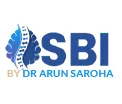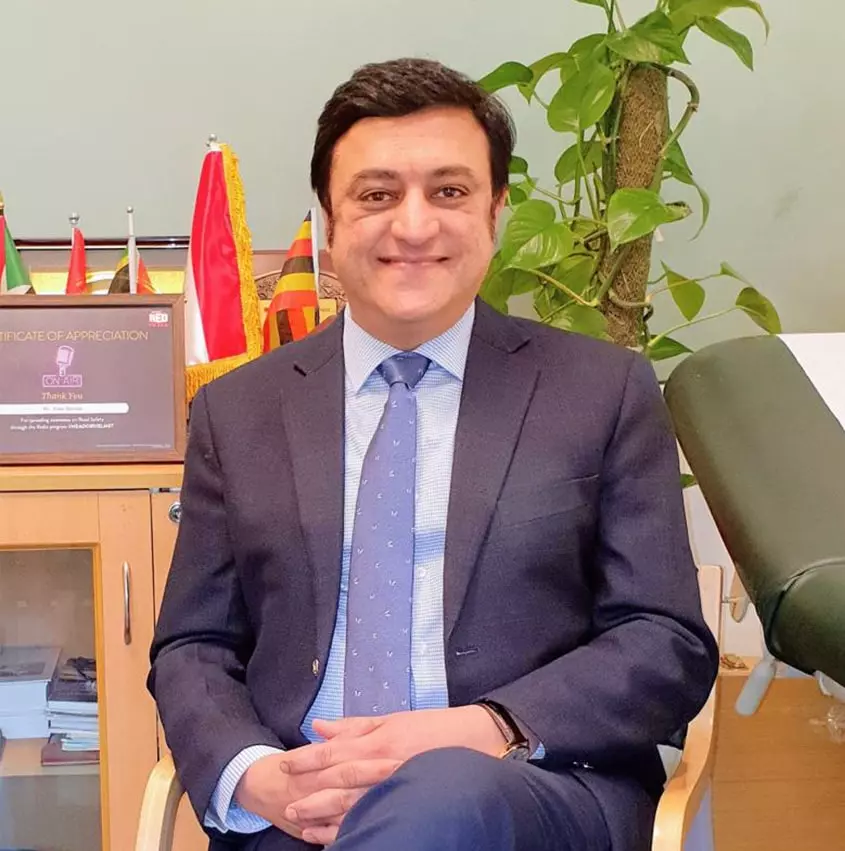Scoliosis, a condition that causes the spine to curve abnormally to the side, affects millions of people worldwide. While many cases of scoliosis can be managed with non-surgical treatments such as bracing or physical therapy, more severe cases often require surgical intervention.
Scoliosis surgery can significantly improve the spine’s alignment and help reduce pain, discomfort, and the potential for further complications. This blog provides an in-depth look at the best scoliosis surgery techniques and offers valuable recovery tips for patients undergoing this procedure.
Understanding Scoliosis and Its Severity
Scoliosis can be classified into different types depending on its cause:
Idiopathic Scoliosis: The most common type, typically seen in adolescents, where the cause is unknown.
Congenital Scoliosis: Caused by spinal deformities present at birth.
Neuromuscular Scoliosis: Resulting from disorders like muscular dystrophy or cerebral palsy.
Degenerative Scoliosis: Occurring in older adults due to age-related spinal wear and tear.
The decision to undergo surgery is usually based on the severity of the spinal curvature (measured by the Cobb angle), progression of the curve, symptoms such as pain or breathing difficulties, and the impact on daily life.
When the curve exceeds 45 to 50 degrees or continues to worsen, surgery is often recommended to prevent further complications.

Best Scoliosis Surgery Techniques
Several surgical techniques are available to correct scoliosis, with the choice depending on the type and severity of the curvature, patient age, and overall health.
The goal of surgery is to reduce the spinal curve and stabilize the spine using metal rods, screws, and other implants. Here are the most commonly used scoliosis surgery techniques:
1. Spinal Fusion
Spinal fusion is the most common and widely used technique for treating scoliosis. In this procedure, the surgeon fuses two or more vertebrae together to prevent further curvature.
Metal rods, screws, hooks, or wires are placed along the spine to hold the vertebrae in a corrected position while they fuse. Over time, the bones grow together, providing stability and reducing the curvature.
Procedure: During the operation, the surgeon makes an incision along the back, exposes the spine, and places metal implants to correct the curvature.
Bone graft material, either from the patient (autograft) or from a donor (allograft), is placed between the vertebrae to encourage fusion.Advantages: Provides lasting results, significantly reduces spinal curvature, and stabilizes the spine.
Disadvantages: It may limit mobility in the fused section of the spine.
2. Minimally Invasive Spinal Fusion
Minimally invasive spinal fusion is an advanced version of traditional spinal fusion, where smaller incisions are used to minimize tissue damage and speed up recovery time.
Procedure: Small incisions are made, and specialized instruments are used to correct the curvature and perform the fusion. This technique typically results in less pain, less scarring, and a faster recovery compared to open surgery.
Advantages: Reduced blood loss, shorter hospital stays, and quicker recovery.
Disadvantages: This method may not be suitable for all types of scoliosis or severe cases.
3. Anterior Spinal Fusion
In anterior spinal fusion, the surgeon accesses the spine from the front (anterior) of the body through the chest or abdomen rather than the back. This approach is often used for curves in the thoracic (mid-back) or lumbar (lower back) regions.
Procedure: An incision is made on the side of the chest or abdomen to access the spine. The surgeon removes the intervertebral discs and places bone graft material to fuse the vertebrae. Metal screws and rods are inserted to stabilize the spine.
Advantages: May provide better correction of lumbar and thoracic curves and preserves more of the back muscles.
Disadvantages: It involves accessing vital organs, which may increase the risk of complications, and has a longer recovery time.
4. Vertebral Body Tethering (VBT)
Vertebral body tethering (VBT) is a newer, non-fusion scoliosis surgery option, primarily used for younger patients whose spines are still growing. VBT allows for spinal correction while maintaining flexibility.
Procedure: A flexible cord or "tether" is attached to screws placed in the vertebrae along the convex side of the curve. Tension is applied to the tether, which straightens the spine over time as the patient grows.
Advantages: Preserves spinal mobility, provides gradual correction, and avoids spinal fusion.
Disadvantages: It is only suitable for growing children or adolescents and is not widely available. The long-term outcomes are still being studied.
5. Growing Rod Surgery
For young children with scoliosis, growing rod surgery is a preferred technique. Instead of fusing the spine, which would inhibit growth, growing rods are attached to the spine to guide its development.
Procedure: Metal rods are attached to the spine and periodically lengthened as the child grows, typically through outpatient procedures every six months.
Advantages: Allows the child to grow while correcting the curve.
Disadvantages: Requires multiple surgeries and adjustments over time.
Recovery Tips After Scoliosis Surgery
Recovery from scoliosis surgery is a gradual process that can take several months, depending on the type of surgery and the patient’s overall health. Here are some essential recovery tips to help ensure a smooth and successful recovery:
1. Follow Your Surgeon’s Instructions
Adhering to your surgeon’s post-operative instructions is crucial for avoiding complications and promoting proper healing. This may include wound care, medication management, and activity restrictions. If you have any concerns or notice unusual symptoms, contact your surgeon immediately.

2. Manage Pain and Discomfort
It’s normal to experience some pain and discomfort after scoliosis surgery. Your doctor will likely prescribe pain medications to help manage this during the initial recovery period. Gradually, you’ll transition to over-the-counter pain relievers. Keeping pain under control will allow you to move more easily and begin rehabilitation sooner.
3. Get Plenty of Rest
Rest is critical in the first few weeks following surgery. Your body needs time to heal, so avoid strenuous activities and limit physical exertion. However, it’s important to get out of bed and move around periodically to prevent blood clots and promote circulation.
4. Use Assistive Devices
For the first few weeks after surgery, you may need assistive devices such as a walker or cane to help with mobility. Follow your doctor’s recommendations on when and how to use these devices.
5. Start Physical Therapy
Physical therapy is an integral part of the recovery process. A physical therapist will guide you through exercises designed to restore your strength, flexibility, and mobility while ensuring the spine heals properly. These exercises will help improve posture, balance, and core strength, all essential for a smooth recovery.
6. Avoid Heavy Lifting and Bending
During the recovery period, it’s crucial to avoid lifting heavy objects or bending your spine excessively. Doing so can strain the surgical site and delay the healing process. Your surgeon will provide guidelines on what activities you should avoid and for how long.
7. Maintain a Healthy Diet
Proper nutrition is essential for healing. A diet rich in vitamins, minerals, and protein can promote tissue repair and bone healing. Drink plenty of water and eat nutrient-dense foods like fruits, vegetables, lean proteins, and whole grains.
8. Wear a Back Brace (If Recommended)
In some cases, your surgeon may recommend wearing a back brace after surgery to support the spine and ensure it heals in the correct position. Follow your doctor’s instructions on how long and when to wear the brace.
9. Be Patient with Your Progress
Recovery from scoliosis surgery takes time, and it’s important to be patient with your progress. Everyone heals at their own pace, so avoid comparing your recovery to others. Set small, achievable goals and celebrate each milestone, whether it’s walking a little further each day or decreasing reliance on pain medication.
10. Return to Normal Activities Gradually
While you may be eager to return to your regular activities, it’s essential to do so gradually. Your surgeon will guide you on when it’s safe to resume work, exercise, and other activities. Avoid pushing yourself too hard, as this can lead to setbacks in your recovery.
Conclusion
Scoliosis surgery is an effective way to correct spinal deformities, reduce pain, and improve quality of life for individuals with severe curves. With various surgical techniques available, patients can receive personalized care that addresses their specific needs. For those seeking Scoliosis treatment in India, the country offers advanced medical infrastructure and skilled surgeons to ensure high-quality care. However, surgery is just the first step—proper recovery and adherence to post-operative guidelines are crucial for achieving the best possible outcome.
By following the recovery tips outlined above, patients can heal more efficiently, regain strength, and return to their daily lives with improved posture and confidence. Remember to consult with your healthcare team regularly and stay committed to your rehabilitation for the best results from scoliosis surgery.



